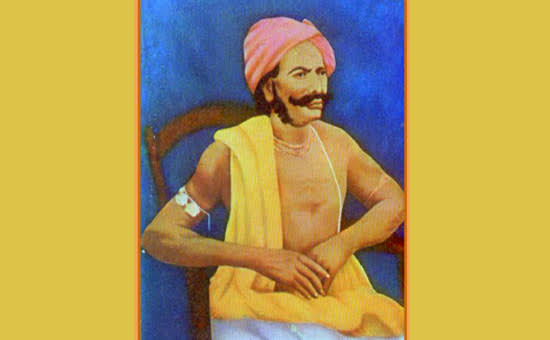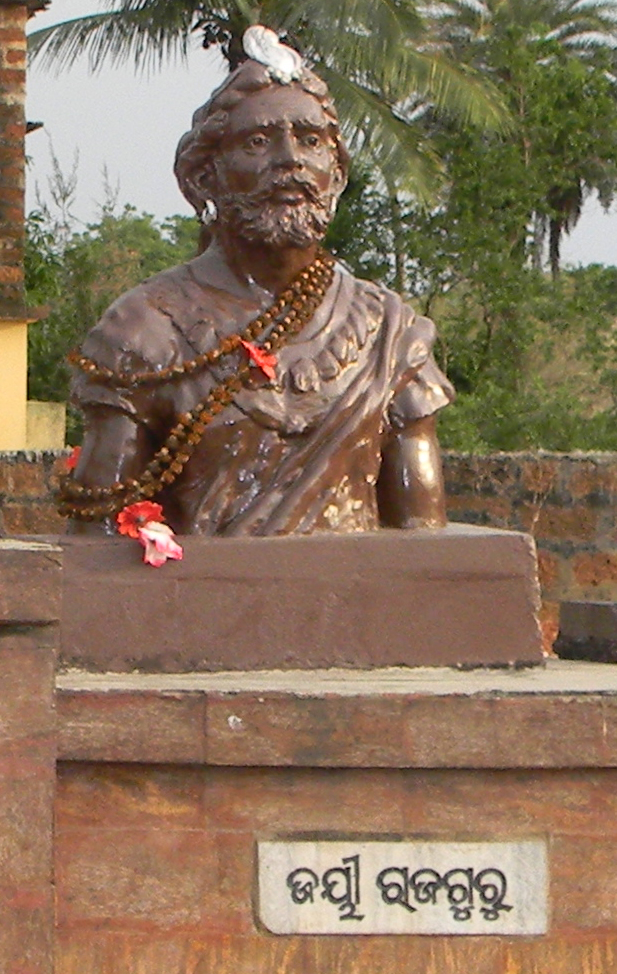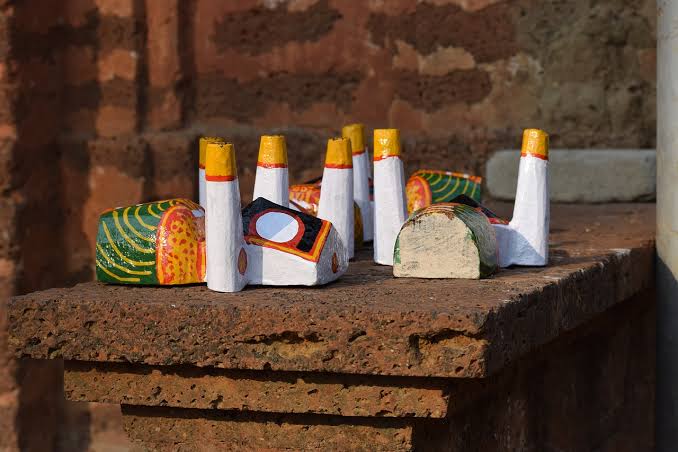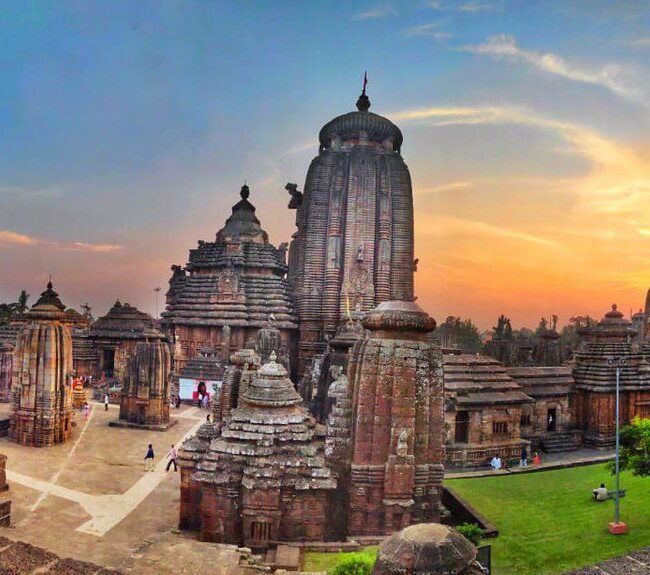Sambalpur, one of the culturally rich and historically significant regions of Odisha, is not just known for its beautiful landscapes, temples, and festivals, but also for the legendary figures who shaped its identity. These legends, with their unmatched courage, wisdom, patriotism, and devotion, left an everlasting mark on the soil of Sambalpur. From brave warriors and rulers to reformers, poets, and spiritual icons, their stories are an essential part of the cultural fabric of this region.
Veer Surendra Sai – The Warrior of Sambalpur
Perhaps the most revered and iconic figure in the history of Sambalpur is Veer Surendra Sai, a true patriot and freedom fighter who led one of the earliest revolts against British colonial rule. Born on January 23, 1809, in the Khinda village near Sambalpur, Surendra Sai belonged to the royal lineage and was a legitimate claimant to the throne after the death of Raja Maharaja Sai. However, the British denied his right and imposed their own rule, which sowed the seeds of rebellion.
Surendra Sai’s resistance started long before the Revolt of 1857 and continued for more than three decades. With support from local tribal communities like the Gonds and Binjhals, he organized guerrilla warfare against the British from the dense forests of Western Odisha. Despite being imprisoned for several years, his spirit never waned. Even after his release, he resumed his fight, demonstrating exceptional leadership and a deep commitment to his motherland. He passed away in 1884, but his legacy continues to inspire generations.
Gangadhar Meher – The Poet of the People
Another gem of Sambalpur is Gangadhar Meher, often referred to as “Swabhab Kavi” or the poet of nature. Born in 1862 in Barpali, Gangadhar Meher was a self-taught poet who rose from humble beginnings. Despite his limited formal education, his poetic brilliance shone through his works. He wrote in Sambalpuri as well as Odia, and his poems reflected deep emotions, cultural pride, and spiritual undertones.
His most famous works include Tapaswini, Kichaka Badha, and Pranaya Ballari. Meher’s poems were not only about mythological themes but also expressed the everyday struggles of rural life, the beauty of nature, and the socio-political changes of the time. He played a significant role in shaping modern Odia literature and is remembered today with institutions like Gangadhar Meher University named in his honor.
Jayee Rajguru – The First Martyr from Western Odisha
Although more commonly associated with the Puri region, Jayee Rajguru had considerable influence in Sambalpur’s political affairs during the late 18th century. A fierce opponent of British rule, he aligned himself with various local rulers, including those of Sambalpur, to build resistance against colonial encroachment. Rajguru’s strategic vision and military alliances set the tone for anti-British activities in the region and helped inspire future fighters like Surendra Sai.
Queen Mohan Kumari Devi – The Forgotten Monarch
Among the lesser known but equally significant figures in Sambalpur’s history is Mohan Kumari Devi, who played a brief but notable role during the political upheaval following the death of Raja Maharaja Sai. She held the reins of Sambalpur for a short period and fiercely resisted British interference. Although her reign was overshadowed by the dominance of the East India Company, her spirit and determination remain an important chapter in the region’s royal history.
Balaram Dev – Founder of Sambalpur Kingdom
The roots of Sambalpur’s cultural and political identity can be traced back to Chauhan Raja Balaram Dev, the founder of the Sambalpur kingdom in the 16th century. A scion of the Chauhan dynasty of Patna (now in Balangir), Balaram Dev established his capital in Sambalpur and laid the foundation of a regional kingdom that would resist external invasions for generations.
Under his leadership, the region flourished both economically and culturally. He promoted agriculture, trade, and temple building, and supported the arts and local traditions. The royal legacy he created lasted for several centuries, playing a crucial role in resisting Mughal and later British influences in Western Odisha.
Pandit Bhimsen Satpathy – The Spiritual Luminary
Sambalpur is not just known for warriors and poets but also for its spiritual sages. One such revered personality is Pandit Bhimsen Satpathy, a scholar and spiritual guide known for his deep knowledge of Sanskrit scriptures and Vedic traditions. Born in a family of priests, he dedicated his life to spiritual teaching, temple rituals, and the preservation of ancient traditions.
He was instrumental in promoting the worship of Maa Samaleswari, the presiding deity of Sambalpur, and played a vital role in rituals associated with the famous Samaleswari Temple. His life was a blend of wisdom, service, and devotion, and his teachings still influence many in the region.
Contemporary Icons – Custodians of Culture
In modern times, Sambalpur has continued to produce legends in the fields of education, music, dance, and public service. Renowned personalities such as Padma Shri Haldhar Nag, the Sambalpuri poet known for his earthy verses in Kosli language, and Jitendra Haripal, the voice behind the iconic song “Rangabati,” have carried the torch of Sambalpur’s legacy into the contemporary era.
Haldhar Nag, known as the “Lok Kabi Ratna,” writes powerful poetry that speaks of rural life, tradition, and social justice. Despite limited education, his work has gained national recognition, highlighting the soul of Western Odisha.
The Legacy Continues
The stories of these legends are more than just history—they are the soul of Sambalpur. They represent the resilience, creativity, and unyielding spirit of the people. Whether in battlefields, in the quiet corners of village homes, or on the vibrant stages of folk performances, their influence can be seen and felt everywhere.
Efforts are ongoing to preserve their legacy through literature, public celebrations, museums, and academic studies. Schools and universities in the region regularly organize events to honor their contributions. Statues, memorials, and cultural centers serve as living reminders of their life and teachings.
Conclusion
The legends of Sambalpur are not mere figures from the past—they are eternal symbols of inspiration. Their lives tell the story of courage, creativity, devotion, and pride in one’s roots. By remembering and celebrating them, we not only honor their sacrifices but also strengthen our cultural identity.
Their legacy continues to light the path for future generations, reminding us that greatness often rises from the heart of the land, fueled by passion, sacrifice, and the will to uplift the people.





